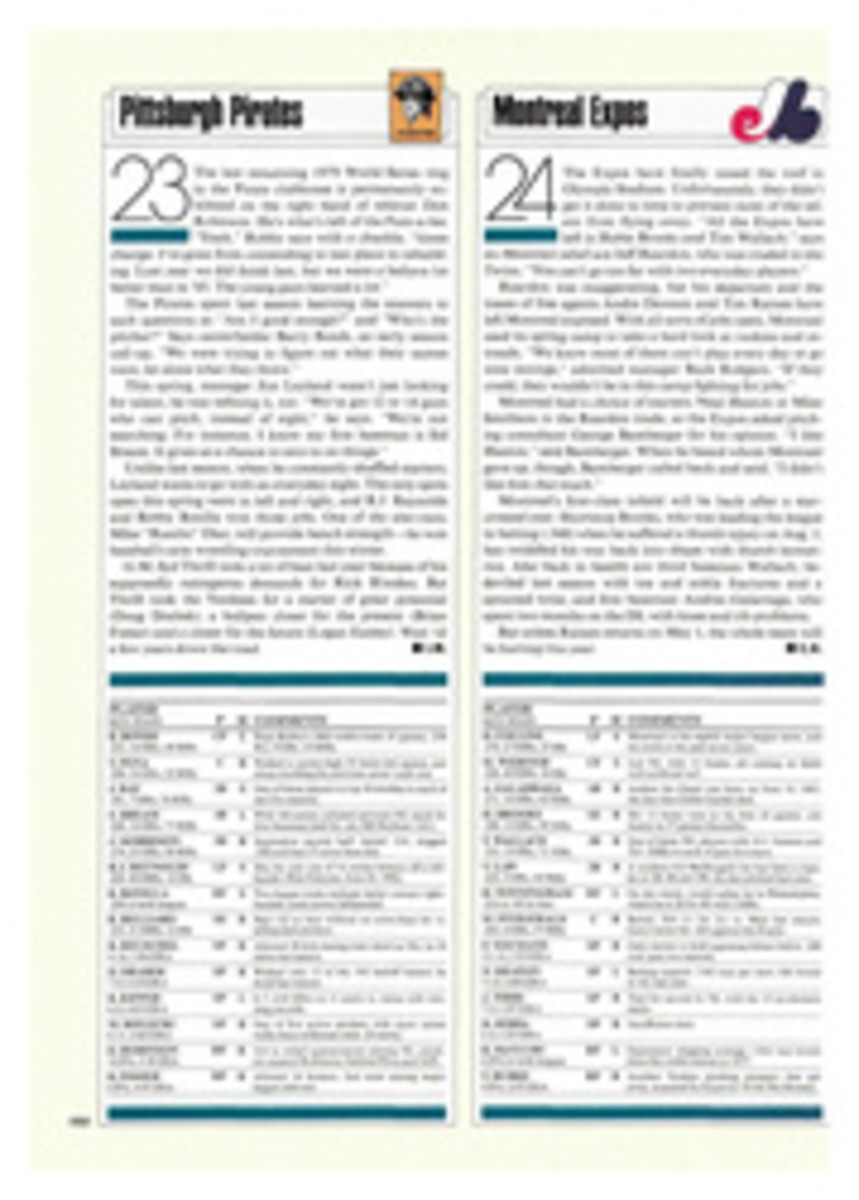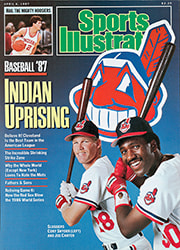
WORKING HAND IN GLOVE
What do you do if you can't bear to retire your tattered high school baseball glove and you don't want to spend 150 bucks for a new glove of equal quality? You send the old one to The Gloveman in Fremont, Calif. the only shop in the country specializing in the repair, restoration and reconditioning of baseball gloves. For "no more than $34.50," The Gloveman, a.k.a. Lee Chilton, promises to rebuild your glove and even guarantees his work for one year. "We rebuild them the way they used to make them," says Chilton.
He begins by breaking the glove down—cutting all the laces and turning it inside out. "Once you get on the inside," he says, "you can tell what you've got." Where required, he glues and sews in new leather. Next, the old padding is discarded, and new horsehair-and-cotton padding is inserted. Fresh leather trim is added, and the glove is restitched with nylon thread. Finally, it's rubbed with The Gloveman's special conditioner and hung in a 150° conditioning room for several hours.
The restoration of old gloves, however, makes up only a small fraction of Chilton's business: Of the more than 500 gloves he and his five assistants rebuild every month, 90% are less than a year or two old. Chilton, 37, is a large and passionate man, and when he gets started on the subject of baseball gloves, he's got a lot to say.
"For the most part, the gloves they're making today are just plain garbage, mass-produced garbage. The quality of the leather is lousy, and it hasn't been properly aged," Chilton says. "With the modern chrome tanning process used today, they can tan a hide in no time, but it clogs the pores of the leather. The old alum tanning process took time, but you got quality."
Chilton reaches into the mound of gloves on his workbench and digs out an old catcher's mitt. "This mitt is 30 years old. You can look at the quality of the leather as compared to what we have on the market now." He pulls out another glove. "This glove is no more than a couple of months old. You go out and you spend $80 for this glove, and you don't get a guarantee. And this glove is falling apart already.
"You got a rip there, you got another one here, you got one starting around this hole, and the laces are about to go," he says. "And that's standard on new gloves. Why? Why should a glove rip out like that? It shouldn't. It's improperly tanned, that's why it's ripping," Chilton says.
Those involved in the manufacture of baseball gloves see things a little differently. They insist that gloves aren't what they used to be because the buying public has changed. "Our experience and our surveys show that the players don't want to go though the break-in process anymore," says Jacque Hetrick, the director of public relations for Spalding. "The leather isn't as thick as it was in the past, but that's what the consumer wants."
George Ruzicka, a buyer for Wilson Sporting Goods, agrees. "What the Sunday player wants is to be able to pick up a glove and play with it right away," Ruzicka says. "The tanning process has changed over the years to where a lot of the oils can now be added in the tanning. Because of this softer leather that you can just pick off the shelf and use, something has to give, and it's going to be durability."
But Chilton says the quality of the leather and the tanning process are only two of the problems with today's gloves. Another is the use of Naugahyde to replace leather interiors. "It's the same with padding," he says. "Many gloves are filled with Styrofoam instead of cotton and horsehair. It's 'cost-effective.' And I'm not just talking about inexpensive gloves."
To illustrate his point, Chilton goes into his office and returns with two foreign-made gloves cut from the same pattern; one sells for less than $50, the other for more than $100. The cheaper glove has cotton-and-horsehair padding, the more expensive one just has thin cotton; the first has a thumb spoon (a piece of plastic inside the thumb which keeps the shape), the second does not. The message is simple: One glove is not necessarily better than another simply because it costs more.
Chilton's interest in glove repair began when he was a high school student in Stockton, Calif., and he bought a top-of-the-line glove with money he had saved from mowing lawns. Almost immediately, the laces broke and he took it back to the retailer, who sent it to the manufacturer. Six weeks, Chilton was told. He waited six weeks, then six months, then six years. Twenty-two years later, he's still waiting.
In 1965, shortly after his new glove was returned to the manufacturer, Chilton went to a thrift store in his neighborhood, bought an old glove for a nickel and tore it apart to see how it was built. Soon, he was buying gloves by the dozen, rebuilding them and selling them.
Chilton has always been an inquisitive and enterprising sort. He holds five graduate degrees, including a Ph.D. in social psychology from Southwestern University of Arizona. He had been a college instructor in sociology, psychology and community relations, but in 1981, while working as a community relations specialist with the San Jose Police Department, he suffered a mild stroke. After doctors told him to turn to a less stressful line of work, Chilton decided to turn his longtime hobby of glove repair into a full-time business.
Today, his customers range from local Little Leaguers to major-college players from all over the United States. The Gloveman has a repair contract with sporting goods stores in 14 western states. The company offers a turnaround time of two days for repairs (on request). Chilton's company, The Gloveman, recently introduced its own fine of catcher's mitts that sell for $150 and have a three-year warranty; a five-year warranty is available for an additional $5. (The Gloveman's address: 2000 Warm Spring Court, B-1 Bay-3, Fremont, CA 94538. Telephone: 415 490-3794.)
"I've always been involved with kids," says Chilton. "Kids who hang out on street corners, kids with the types of attitudes nobody likes. I've taken baseball glove repair and my expertise in the field of education, and I've meshed everything together."
When it comes to gloves, Chilton says his main concern is for the consumer. "The general public doesn't know and doesn't understand," he says. "Do you know who buys the largest percentage of youth gloves in this country? Mothers. And, unfortunately, most of them don't know anything about baseball gloves.
"My recommendation is to go down to the thrift store and take your time. Look for leather trim. Get one of those good old gloves that costs five dollars and send it to me to rebuild," Chilton says. "That's a good investment—something that's gonna last you. And I'm not just saying that to increase business. I've got plenty of business."
If you still want to buy a new glove, says Chilton, "Make sure the glove is all leather—trim, inside, outside. All leather. Period." He also points out that you can look carefully through the eyelets to see if the padding is cotton and horsehair. And don't just assume that the high-priced, name-brand glove is the best.
Both Ruzicka of Wilson and Hetrick of Spalding recommend that consumers start at the $60 level if they are serious about a glove. But Chilton isn't so sure that money is everything when buying a glove. "One of the best gloves I've seen for the money was a $40 drugstore model," Chilton notes. In contrast, he says, some of the "pro" models, which can run up to $180, are vastly overpriced and often flawed (bad laces are one of the most common faults).
"But what I really recommend, if you're gonna buy a new glove, is to test the market every time you walk into a store," says Chilton. "Ask the questions: 'Is this glove guaranteed? What if it tears? What if a lace breaks?' Talk to your retailer. Find out.
"We don't have a consumer advocate—a Ralph Nader—for baseball gloves. I'm the closest thing there is to an advocate. And what I'm saying is, if you're gonna put a product on the market with your name on it, guarantee it."
PHOTO
MICKEY PFLEGER
With some 500 repair orders coming in every month, The Gloveman's work is never done.
PHOTO
MICKEY PFLEGER
Many modern gloves are easy to use, and easy to abuse.
Jay Feldman, a free-lancer in Winters, Calif., recently gave away his 10-year-old Rawlings.

